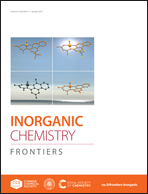Solvent-dependent textural properties of defective UiO-66 after acidic and basic treatment†
Abstract
UiO-66 is one of the most chemically stable metal–organic frameworks (MOFs) available. However, little is known about its stability in organic solvents. In this study, we synthesized a highly defective UiO-66 (HD-UiO-66) and a less defective one (D-UiO-66) and explored how their properties change when exposed to weak and strong acids, both organic and inorganic, and dissolved in different solvents: water, dichloromethane (DCM), and tetrahydrofuran (THF). Exposing both defective UiO-66 materials to weak acids and bases, such as acetic acid and triethylamine, maintains their crystalline structure and porosity, irrespective of the solvent. Sulphuric acid decomposes D-UiO-66 in all solvents studied and HD-UiO-66 in DCM and THF, but not in water. Trifluoroacetic acid decomposes the frameworks only in DCM. Tetramethylguanidine decomposes HD-UiO-66 and D-UiO-66 in organic solvents but maintains some of the MOFs’ porosity and crystalline structure in water, whereas potassium carbonate damages the MOFs to a greater extent in water than in organic solvents. Our results show that the acid/base properties of the solvent modulate the strength of acids and bases and its polarity determines the extent of their solvation, thus playing a crucial role in altering the MOF's textural properties. This systematic investigation highlights the central role played by the solvent in tuning the properties of MOFs, which is relevant for liquid-phase applications in acidic and basic environments, such as catalysis and adsorption.



 Please wait while we load your content...
Please wait while we load your content...